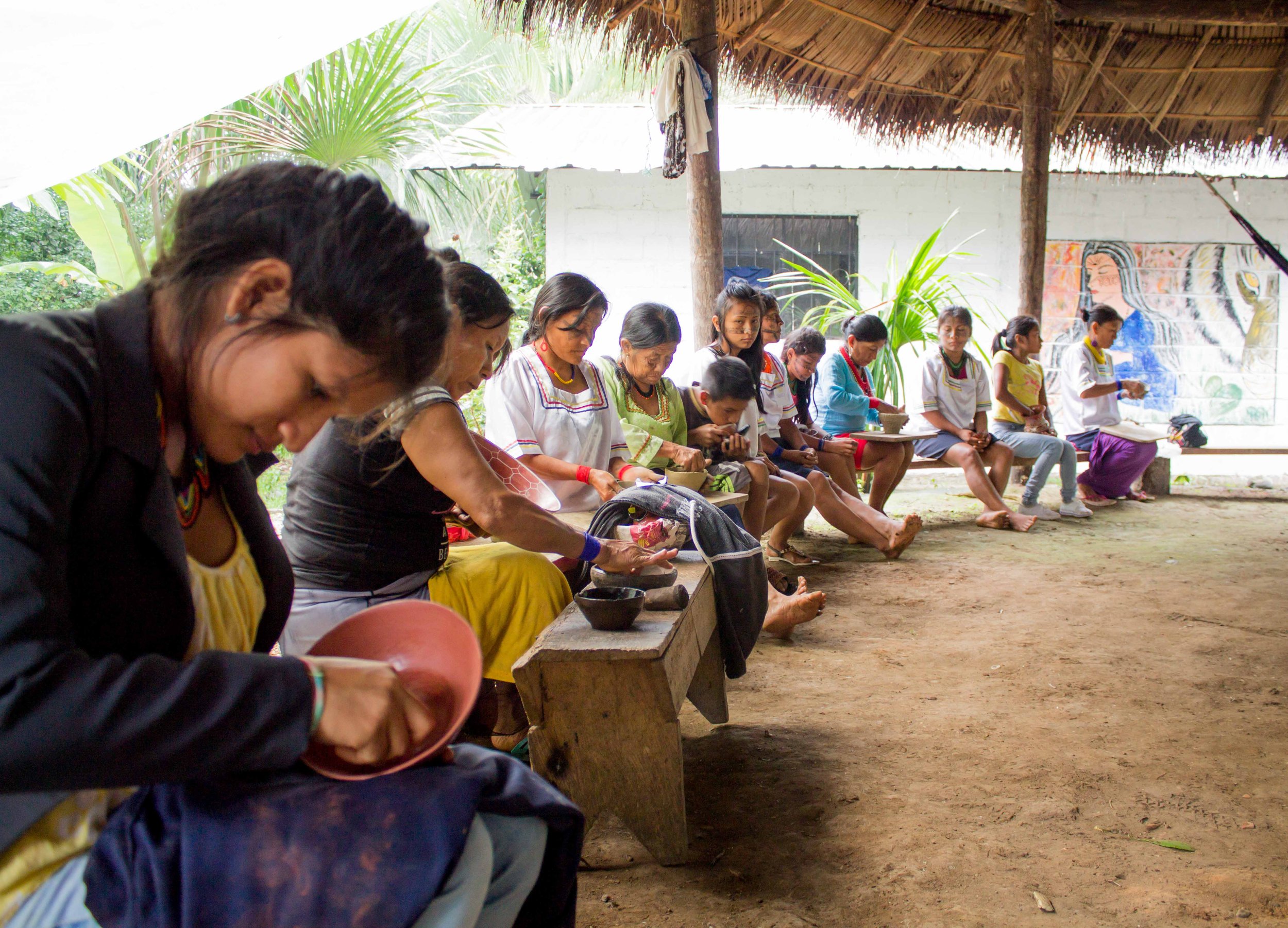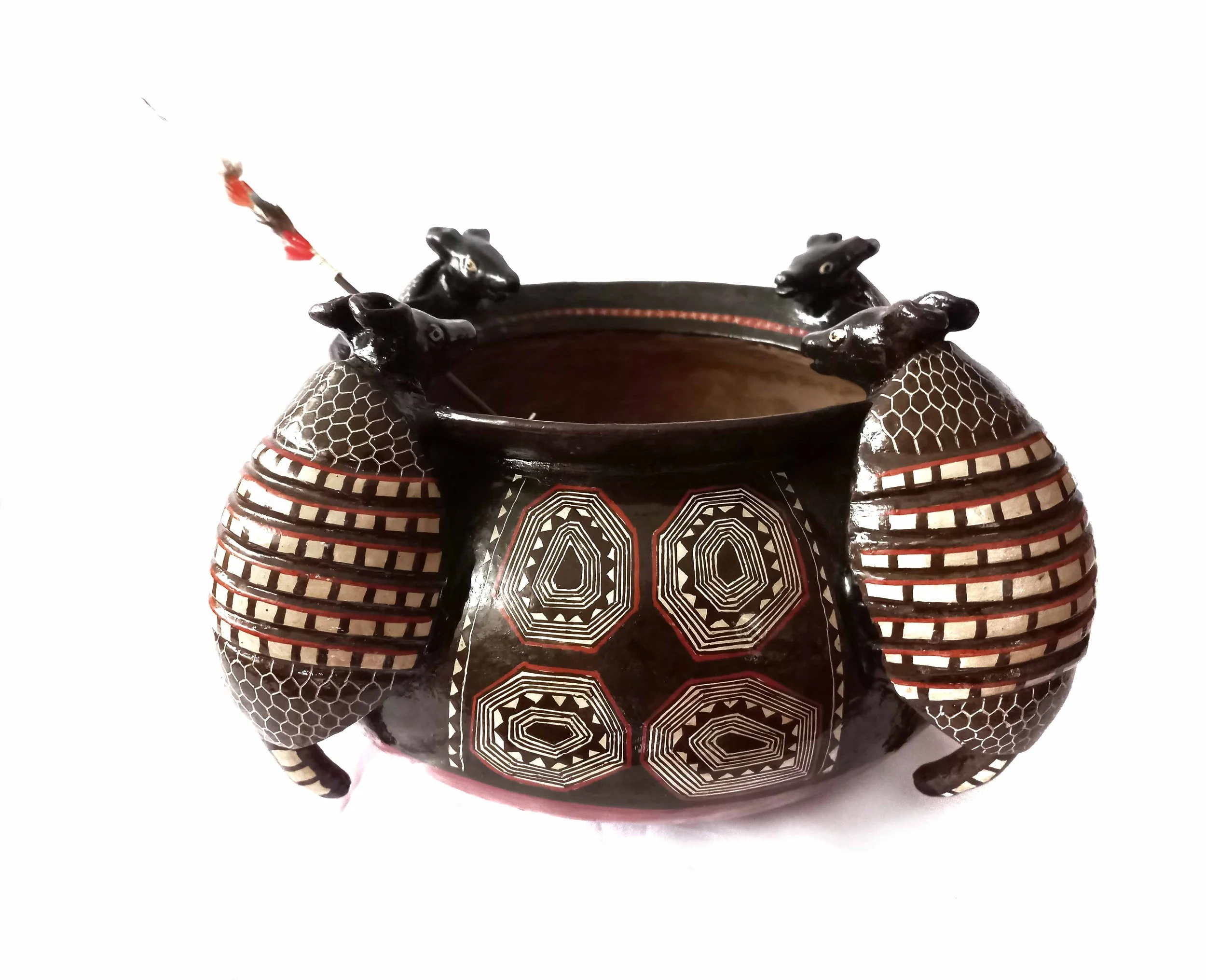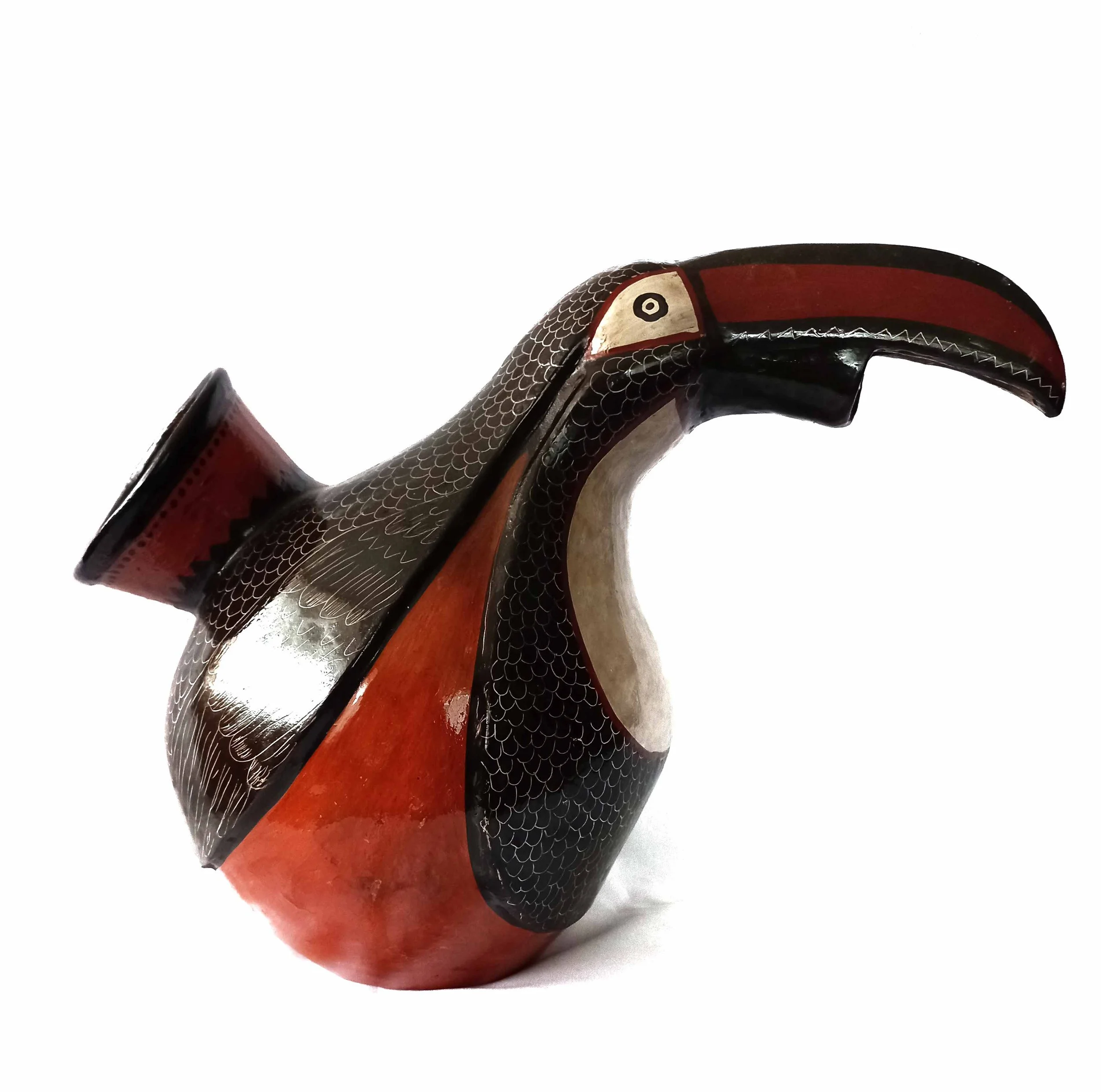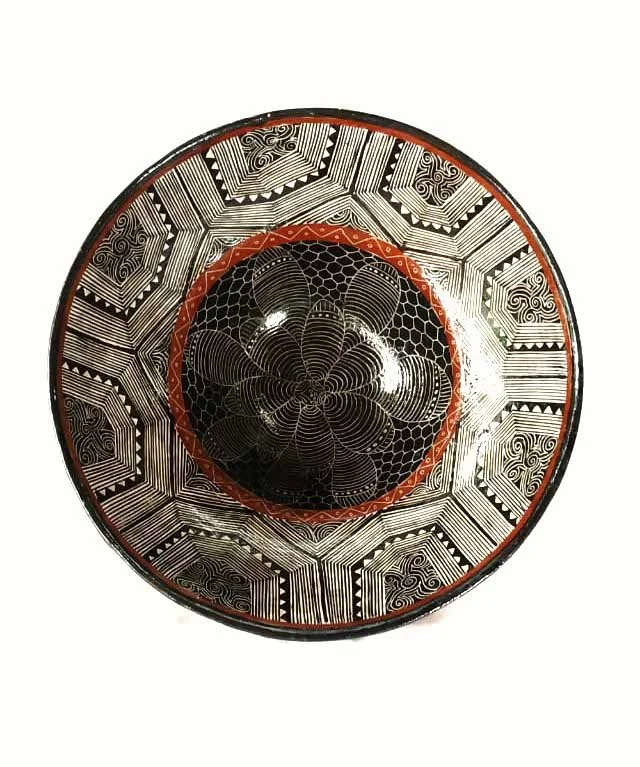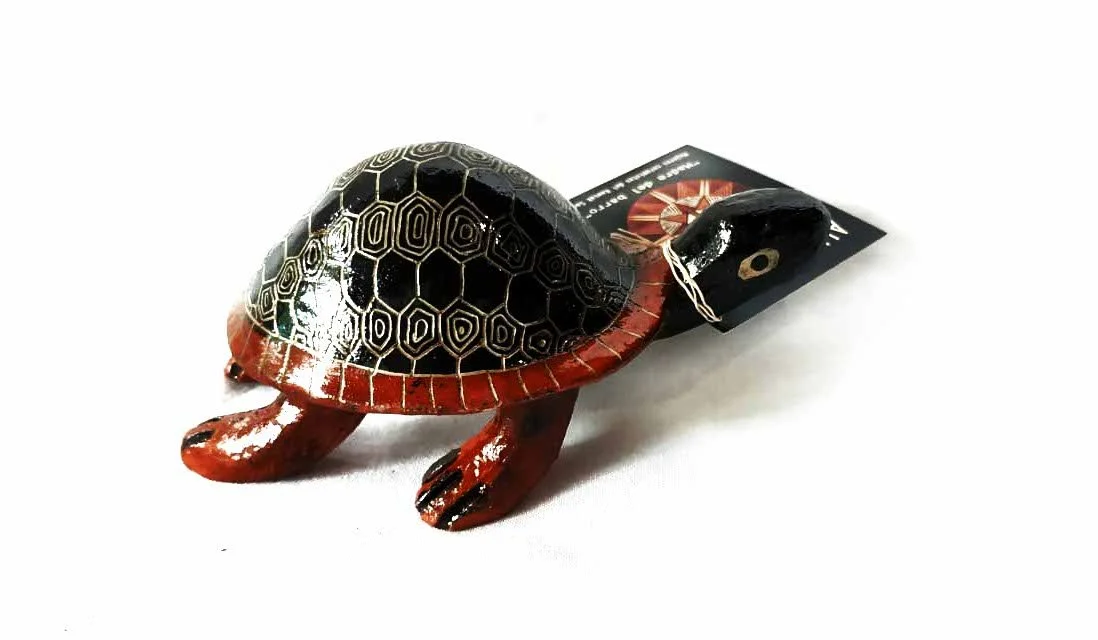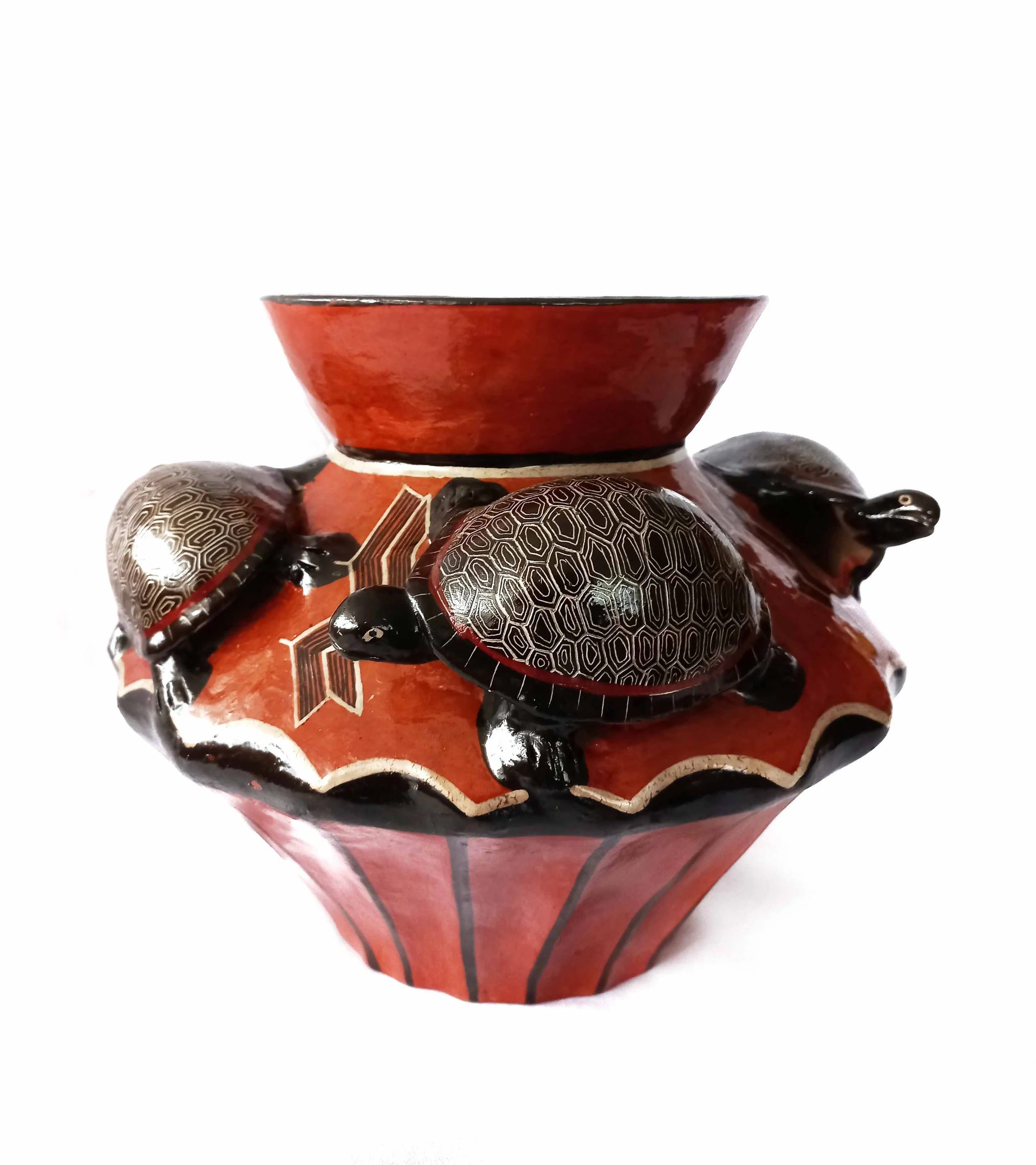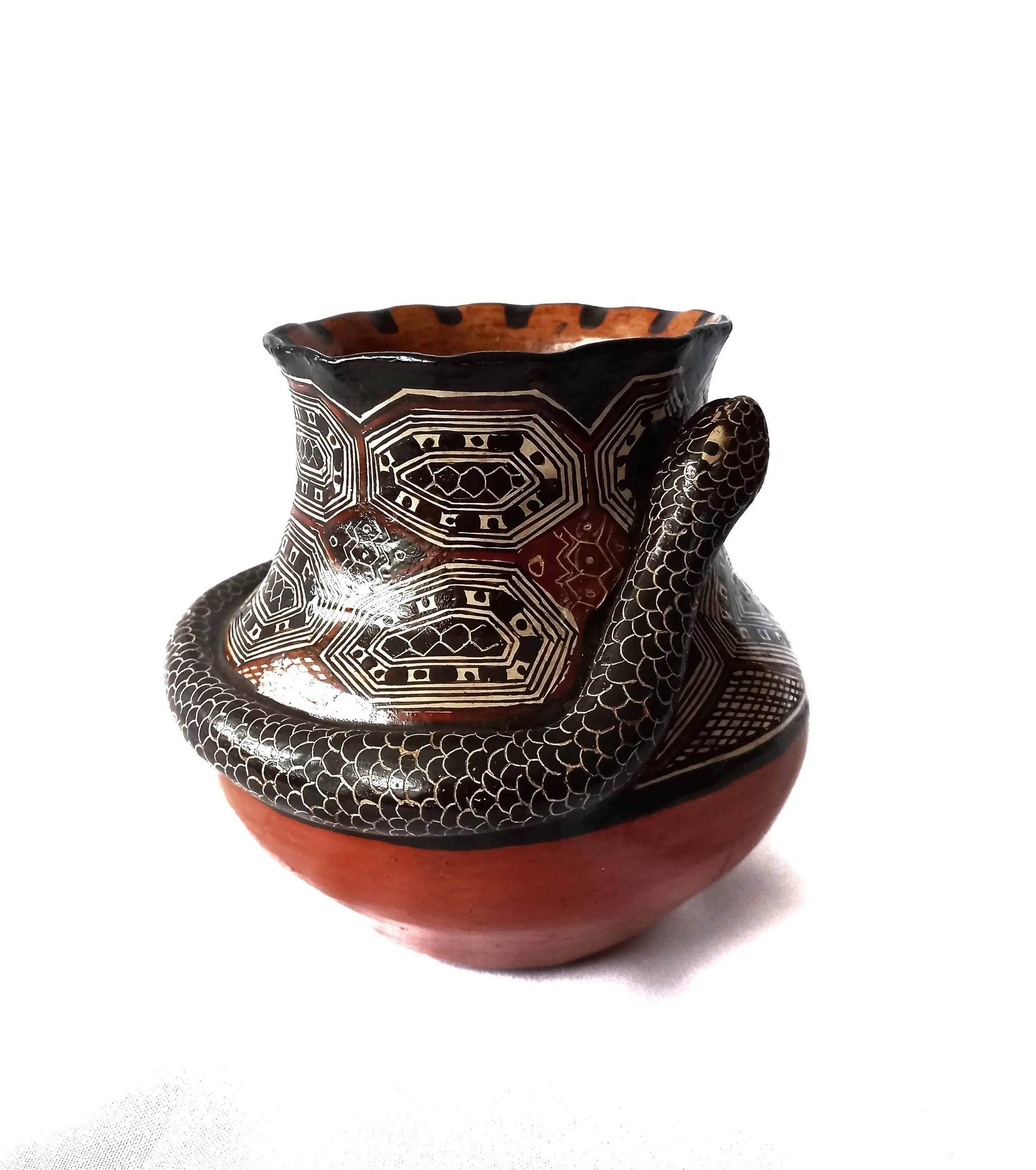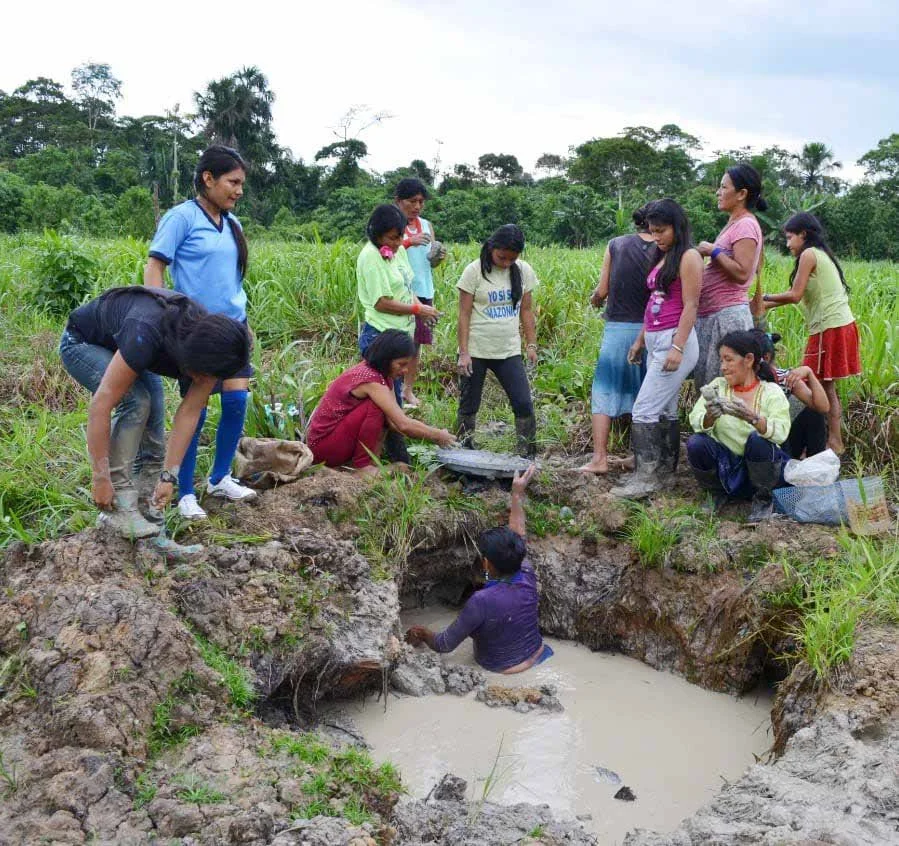AWEIDI Rainforest Colours
How Traditional Ceramic Practices Are a Means of Protection for Amazonian Tribes
Located in the province of Pastaza, in the central part of Ecuador’s Amazonian jungle, artist cooperative AWEIDI Program - Rainforest Colours is crafting visually stunning ceramic figurines and vessels. Ten women from the Andwa and Kichwa tribes run the cooperative, as ceramics have ancestrally been a women’s trade in Amazonian cultures. The majority of their pieces are adorned with motifs that are derived from the natural world; the shell of a tortoise, the body of an armadillo, snake skin, the stars, or the leaves of palms. However, they have worked with researchers over the past four years to revive ancient designs that have been found through archaeological remains.
AWEIDI Program - Rainforest Memories uses traditional techniques from start to finish. Natural clay is harvested from the rainforest, depending on where it is harvested it will range in shades from white, black, red and yellow. To mold and decorate their ceramic figures they use mates (river stones) and wiwishku bark. Vessels are decorated with vibrant white and red natural pigments painted on with fine brushes made from vegetable fiber or locks of human hair. Once ornately designed, the ceramic pieces are ready to be fired. Using already fallen trees, the pottery is fired and then covered with shirkillo, a vegetable resin that has been used since time immemorial as a lacquer. Jars are covered with natural rubber resin to waterproof them.
Some of the greatest threats facing tribes like the Andwa and Kichwa are of course deforestation, mining, and oil extraction. In this face of desecration, the women of AWEIDI Program - Rainforest Memories resist through their ceramic artworks, which not only prioritize being in right relationship with the natural world, but also bring visibility to their culture and sovereignty: “Spreading our traditional work helps us conserve our territory from external threats and ensure the materials are extracted only from the forests, but also the food and nature that keeps the world in balance. When we participate in fairs or exhibitions, we allow them to get to know our culture, traditions, and social and environmental problems. Pottery allows us to generate subsistence resources for our families and communities and help us keep this culture alive. Working with clay identifies us as Amazonian women.”


